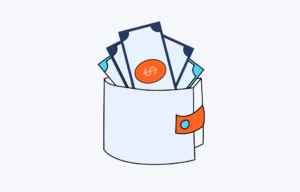What if you don’t want to be 100% equities in your portfolio? What role do bonds play in your portfolio?
Frank Vasquez is an active member of the ChooseFI community and has a lot of knowledge in the area of bonds and their place in your portfolio. In 2008, he read “Spend To The End” that said he should put all of bond money in TIPS (Treasury Inflation Protected Securities). He thought they would do well while stocks were doing poorly… but the reality was his TIPS went down too!
So he started wondering, are there bonds that actually do go up when the stock market goes down? He found that the world of bonds is extremely varied, just as varied as the stock market.
There are three purposes of bonds in your portfolio:
- Stability
- Income
- Diversification
Stock Vs Bonds
Stocks are a piece of ownership of the company. Bonds are debt. When you buy a bond, you are loaning money to the company or government. A bond has a length just as a loan does, this can vary from 30 days up to 30 years.
You can buy government bonds directly from the government at treasurydirect.gov. But it probably makes more sense to buy bond funds. For example, the Vanguard Total Bond Fund (BND).
The Vanguard Total Bond Fund includes:
- 50% treasury bonds which are bonds issued by the federal government
- 25% in high grade corporate bonds which are issued by the largest most stable companies
- 22% are government mortgage bonds. These are the bonds that are used to back mortgages
- 0% municipal bonds
- 0% junk bonds which are low grad corporate bonds
Bond terms in the Vanguard Total Bond Fund:
- 36% of the bonds are long term bonds which are 10 years or more
- 39% are intermediate term which are 5-10 year terms
- 25% are short term
Listen: Stay The Course
Bond Returns
There are two components of return from bonds–one is the interest you receive and the other is appreciation or depreciation–they can go up and down in value. Generally, when interest rates fall, the capital value of your bonds rises and vice versa.
The reason your bond becomes more valuable when rates fall is because the bonds that have already been issued are at a higher than current market rates. For example, if a bond is issued with a fixed rate of 5% and then rates fall to 4%, that 5% bond is more desirable.
You may think that bond funds do not track the stock market, but that isn’t necessarily the case. The Vanguard Total Bond Fund fell along with the stock market in early March of this year and then recovered. The reason for this is because corporate bonds tend to follow the stock market. When corporations show signs of trouble, it makes sense that the perceived likelihood of them defaulting on their debt (their bonds) would increase–making their bonds less valuable.
However, government bonds go the opposite of the stock market. If corporations can’t be trusted to pay their debts, those government bonds start looking pretty good.
Another factor that is important in how much a bond fund will move is the duration of the bonds. Longer term bonds will have more volatility.
Bonds That Rise When The Stock Market Falls
The Vanguard Total Bond Fund is stable. Due to it’s mix of issuers and terms it doesn’t track the stock market at all. It has a 0% correlation to the stock market. However, there are bonds that will do the opposite of the stock market. Bond funds that rise when the stock market falls.
Long Term Treasury Bonds
The most common fund for Long Term Treasury Bonds is TLT. Frank also invests in EDV. Both are bond EFTs.
The interest rates on these funds is small, 3 or 4% but the capital appreciation when the stock market is volatile is why Frank invests in them. They can be quite volatile themselves, these are not funds he uses for stability. When interest rates drops 1 or 2% the capital appreciation of these bond funds might raise 20 or 25%. But it works the other way too! When interest rates rise, the value of these bond funds will drop dramatically.
So how do funds with such high volatility create balance? Since these funds move in the opposite direction of the stock market it brings balance to your portfolio as a whole. But you want to be cautious not to weight too heavily to one side or the other.
Listen: Investor Policy Statement
Tools
There are tools out there that allow you to run simulations and you can see how different portfolio mixes would have performed in different historical time periods.
Check out M1 Finance if you are interested in a fee-free robo advisor.



